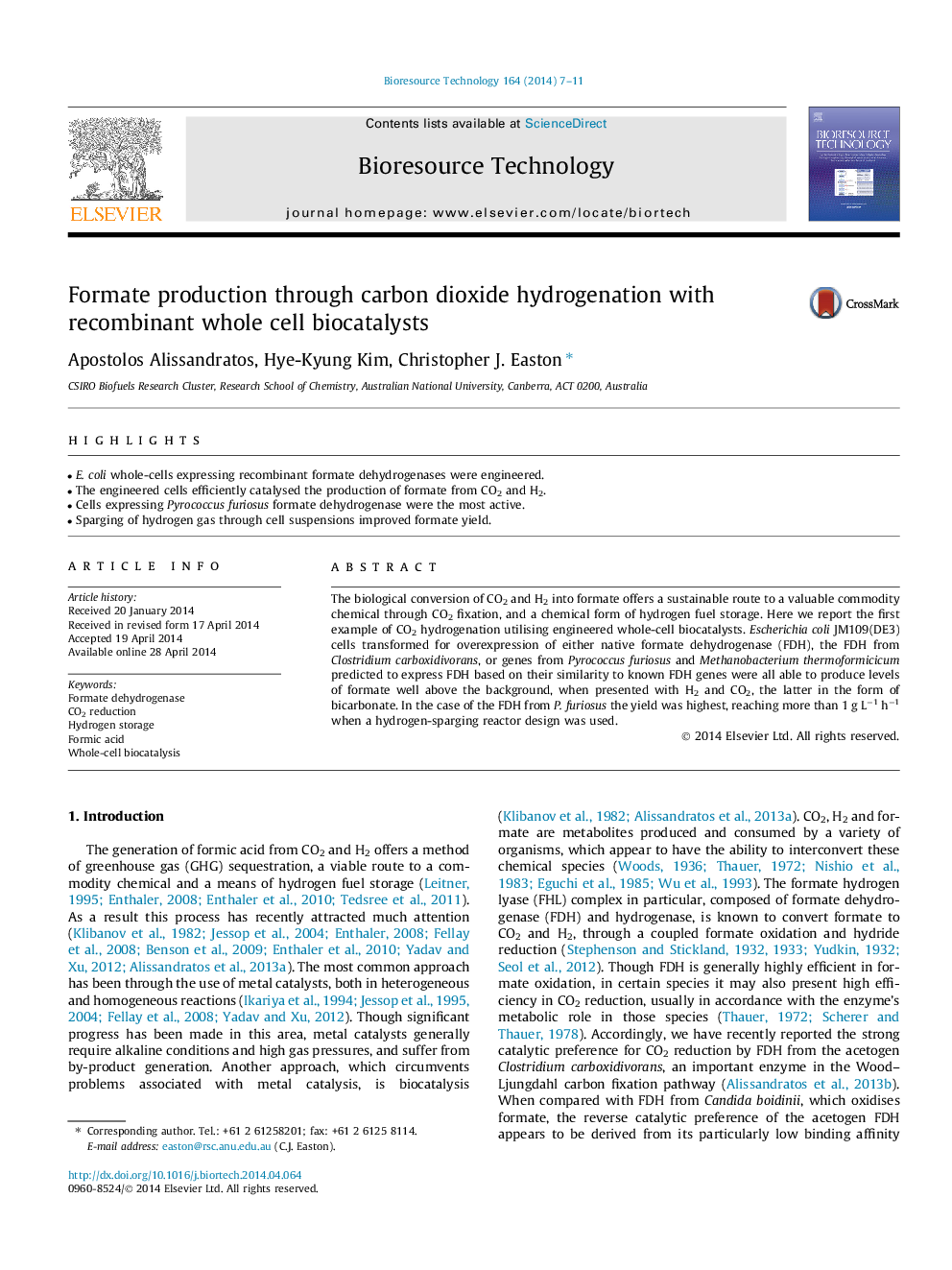| Article ID | Journal | Published Year | Pages | File Type |
|---|---|---|---|---|
| 7077778 | Bioresource Technology | 2014 | 5 Pages |
Abstract
The biological conversion of CO2 and H2 into formate offers a sustainable route to a valuable commodity chemical through CO2 fixation, and a chemical form of hydrogen fuel storage. Here we report the first example of CO2 hydrogenation utilising engineered whole-cell biocatalysts. Escherichia coli JM109(DE3) cells transformed for overexpression of either native formate dehydrogenase (FDH), the FDH from Clostridium carboxidivorans, or genes from Pyrococcus furiosus and Methanobacterium thermoformicicum predicted to express FDH based on their similarity to known FDH genes were all able to produce levels of formate well above the background, when presented with H2 and CO2, the latter in the form of bicarbonate. In the case of the FDH from P. furiosus the yield was highest, reaching more than 1 g Lâ1 hâ1 when a hydrogen-sparging reactor design was used.
Related Topics
Physical Sciences and Engineering
Chemical Engineering
Process Chemistry and Technology
Authors
Apostolos Alissandratos, Hye-Kyung Kim, Christopher J. Easton,
